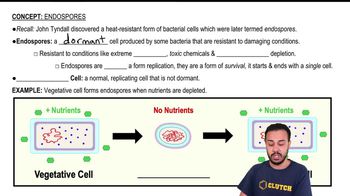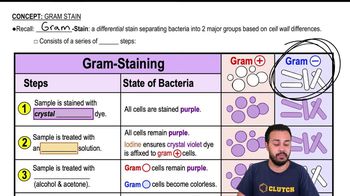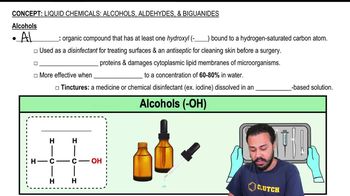Textbook Question
Why is a mordant used in the Gram stain? In the flagella stain?
136
views
 Verified step by step guidance
Verified step by step guidance



Why is a mordant used in the Gram stain? In the flagella stain?
Which of the following pairs is mismatched?
a. capsule—negative stain
b. cell arrangement—simple stain
c. cell size—negative stain
d. Gram stain—bacterial identification
e. none of the above
What is the purpose of a counterstain in the acid-fast stain?
What is the purpose of a decolorizer in the Gram stain? In the acid-fast stain?
Assume that you are viewing a Gram-stained field of red cocci and blue rods through the microscope. You can safely conclude that you have
a. made a mistake in staining.
b. two different species.
c. old bacterial cells.
d. young bacterial cells.
e. none of the above
Fill in the following table regarding the Gram stain:
<IMAGE>